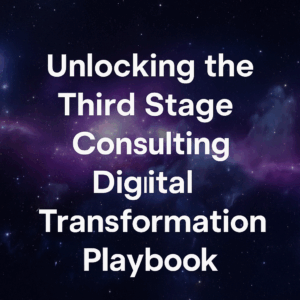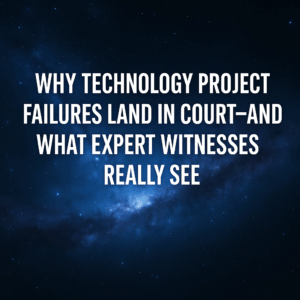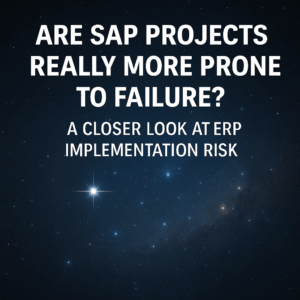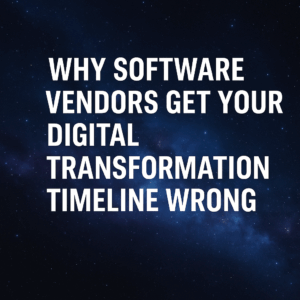Exciting new technologies are flooding the market on a daily basis, connecting and automating nearly every aspect of our personal and professional lives. Technology makes our lives and jobs faster, easier, more enjoyable and more profitable through IoT, at least that’s what we’re told.
But there has to be a limit. Technology IS never ending. It will always continue to grow, become stronger, faster and more powerful, and if we simply try to adopt everything that comes our way we will get swallowed up.
Like exploring an unchartered cave, you go in step by step, with ladders, ropes, flashlights and teammates to support you. You have backup communications, plan around temperature changes and let others know where you are going. In order to find your way back you mark a trail and create a map so the cavern can be explored further. Simply jumping into the darkness and hoping for the best is a very bad idea, yet this what we are finding many companies are doing with their technology plans.
At a high level, the best way to navigate technology adoption is through proper education and planning. As you structure your technology future, consider these 3 steps:
Table of Contents
Toggle1. Define Your Business Strategy
If you don’t have an overriding business and corporate strategy in place, you have absolutely no business trying to implement technology. Technology strategy needs to be driven by a business purpose. This may sound like common sense, but many business executives tend to run to technology to help “figure out” where they want to take their business.
If you are an IT manager and are asked to go find a new ERP system, you will look like a hero if you simply ask “why”. This question will lead well into the next two steps, Technology Strategy and Digital Roadmap. If there is no “why” coming from the business, you face risks of implementing too many or incorrect systems, unclear processes and misused, mistreated and misunderstood data. These issues ultimately result in excessive risk and cost to the business.
Technology Strategy
Now that you have a business need, the next step is to figure out how technology can help meet these needs. Technology (IT) Strategy is essentially the art of designing an approach for technology to help support a corporate strategy.
As part of building an IT Strategy, consider the following:
- Education: You need to know what’s available now and where technology is trending. Case studies are very helpful to learn what other organizations are doing, along with seminars, webinars and events such as Digital Stratosphere 2020.
- Executive Alignment: The executive team is not done with Business Strategy. They also need to take responsibility for answering critical questions that tie Business Strategy to IT Strategy. Items such as process approach, shared services, cultural adjustment, etc. will need to either come from, or at least be discussed across leadership. Without this initial executive alignment, there is great risk that any strategy created will get dismissed or ignored (i.e. no funding).
- Budget: Budgeting cannot get too focused just yet until you begin to outline a roadmap, but you do need to have an idea of the ballpark that might be available. Most executives will come back with “tell me what we need”. This is the time to tie the IT Strategy back to the Business Strategy. Depending on your relationship with the executive team, you might shoot back with “What is taking over the world worth to you, Dr. Evil?”, or whatever your business strategy might be. Opening the door to an ERP total cost of ownership and ROI discussion and mindset is the target here and educating executives that doing things right may not be “cheap”.
- Baseline Metrics: How is success of the strategy execution going to be determined? What are some current KPIs that can be associated to the business objectives, and what future targets will you be striving for?
Digital Roadmap
Your Digital Roadmap outlines how, at a high level, you are going to execute your IT Strategy. In theory the Roadmap and Strategy could be contained in the same document, but this broken out approach helps to understand more of the reasoning behind the plan that is being created. It contains a few critical pieces:
- Application structure: Outlining what types of systems may meet the business objectives, how they integrate and general purpose of each. It is not necessary at this point to select specific systems as you may need to complete a software evaluation in order to confirm.
- Data strategy (high-level): Where does information live, where is it stored and what are some of the security protocols and regulations that need to be considered.
- Future State Vision: This is the “mapping” part of your Digital Roadmap. There needs to be a connection between where you are now with your technology and where you are going. Like with process mapping, filling the gaps between current and future state is critical if it is ever going to happen.
- Timeline and Dependencies: This will not all happen at once, nor should it. There will likely be “low hanging fruit” that should be addressed immediately, there will be some interim and longer-term goals. Some initiatives cannot begin until others finish, etc.
- Budget: The roadmap budget will be more focused than the initial budget discussions and will begin to breakout budget over time. Allocation may be given to initiatives such as an HCM implementation, web-portal or new data center.
- Governance Structure: Ultimately this roadmap is a living document and will change as the Business or IT Strategy changes. New technology adoption may become more valuable as the competitive landscape shifts, but the original roadmap will be a starting point for validating where and how new technology may fit into your existing infrastructure and budget. Just be certain that it is clear how decisions are made and who needs to approve.
Defining your IT Strategy and Roadmap is a vital exercise to stay competitive and should be done with care, but it should also not take too long. The sooner a business can get aligned and started on critical technology initiatives, the better. This is also a great time to reach out for help from an independent ERP consultancy as you navigate the onslaught of technology





